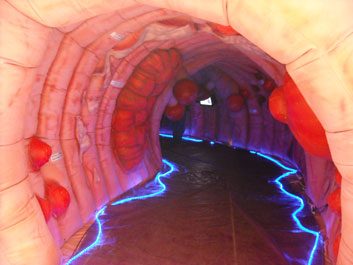
Take a tour through a colon
Ever considered your colon? Colorectal cancer is the second leading cause of cancer death in Canada, yet the disease is about 90 percent curable if caught and treated early. To promote regular screening, the Colorectal Cancer Association of Canada takes its giant inflatable colon on tour across Canada. The 40-foot-wide pink tunnel shows visitors what some common colon diseases look like up close and personal. Click through to see what it’s like to walk through a colon.
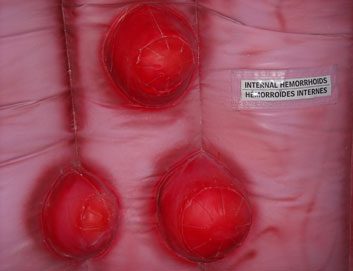
Hemorrhoids
These red bumps represent hemorrhoids. They’re swollen veins in the anal canal and while not life-threatening, these veins can be very painful. They are caused by too much pressure in the pelvic and rectal areas. To alleviate hemorrhoids, increase your fibre intake to prevent straining too much when going to the bathroom.
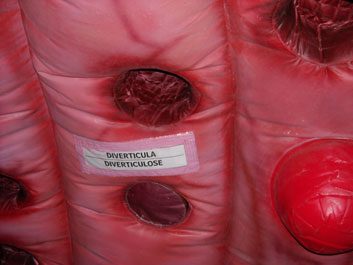
Diverticula
These are diverticula-small pouches that grow anywhere in your digestive system (but most commonly in the large intestine). You may have diverticula and not even know it, because these little pouches often don’t cause problems. However, if they become inflamed, a person may be diagnosed with a digestive disease called diverticulitis. Symptoms may include pain in the lower abdomen, change in bowel habits and abdominal tenderness.
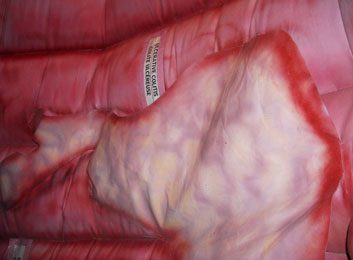
Colitis
These are ulcers caused by colitis, a long-term inflammation of the colon (large intestine). Colitis can cause frequent bloody diarrhea, with fever, poor appetite, loss of weight and anaemia.
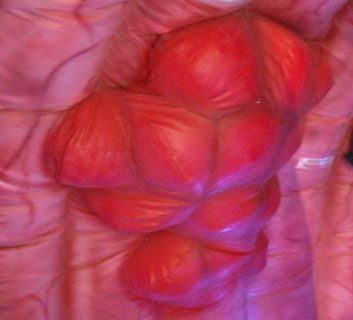
Crohn’s disease
This is swelling caused by Crohn’s disease, a chronic inflammatory bowel disease. Symptoms include diarrhea, abdominal pain and fever. Because the symptoms of Crohn’s disease are so similar to colitis and irritable bowel syndrome, it’s often difficult to diagnose.
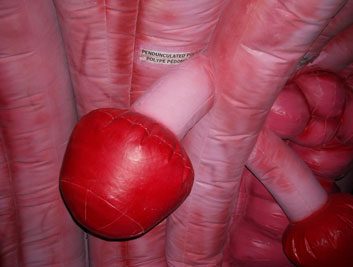
Polyps
These mushroom-like things are colonic polyps-pieces of tissue that can grow on the colon walls. While they’re often not harmful, polyps may turn into cancer, so they should be removed and tested when they appear. You doctor can detect polyps on your colon by conducting a colonoscopy. That’s why it’s so important to get screened regularly.
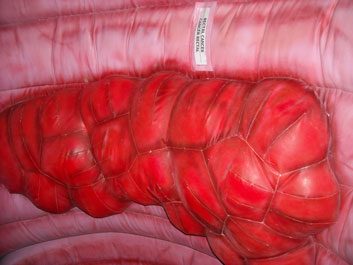
Rectal cancer
This is a simulation of rectal cancer, which starts as cancer cells growing on the inside of the rectum. Symptoms may include a change in bowel movements, fatigue and unexplained weight loss. As rectal and colon cancer come frome the same type of cells, they are often referred to together as “colorectal cancer.” The diesease is 90 percent curable if detected and treated early.
Related:
• Digestive disorders
• The foods to eat for a healthy gut
• Get relief from heartburn symptoms
